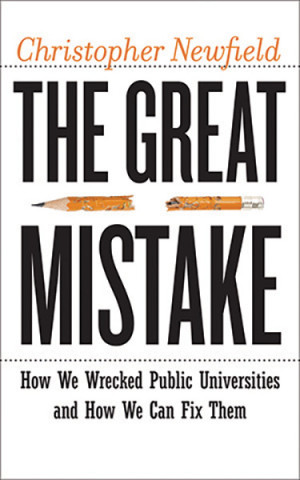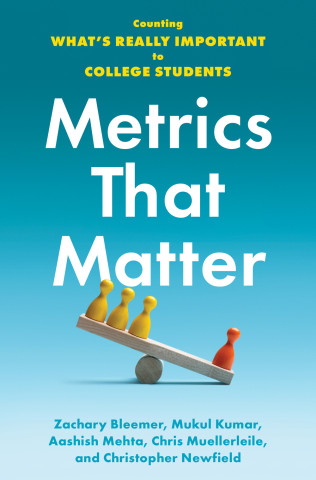Stanford University has announced that its recently concluded fundraising campaign brought in $6.2 billion in gifts. The new money added about $900,000 per enrolled undergraduate ($400,000 per enrolled student) on top of the world's already fifth biggest university endowment ($16.5 billion in 2010-11). At the 5% payout the federal government wants to see as a floor for non-profit endowments, this new money would yield around $310 million per year, or around an additional $20,000 per year per enrolled student.
Meanwhile, at the University of California, the state gives about $9,800 (UCOP says $7,570) for each of UC's 231,000 students enrolled in the fall of 2011 (on $2.27 billion in state general funds [p 3]). The Daily Bruin had a sad story today about a student offering UCLA an additional $8.33 a month from his coffee money.
The irony is that Stanford's additional wealth will have zero impact on the country's college attainment problem. This chart shows why:
The median family income at Stanford was about $125,000 in 2009-10. The cutoff for the top income quartile was around $99,000, putting the median Stanford student well into the top quartile. Stanford has some low-income students but, at around 17% overall, has half the proportion of Pell Grant students as UCLA. According to one report, low-income students are enough of an oddity at Stanford that many of them feel out of place.)
The chart shows that the top quartile already has very high attainment rates: at 80%, it may even be reaching a long-term plateau. American degree attainment will improve only when students born into the lower half of incomes start advancing again, which they have not been able to do in the past 40 years. Stanford educates a small number (both absolute numbers and percentages) of students in the group most in need of educational investment—and given Stanford's extreme selectivity (about 7% of applicants are admitted), the low-income students who get into Stanford are already the great exceptions that would have completed college anyway.
Real value-adding achievement comes from public university systems, both because of its vastly greater size and its more proportionate service to the lower-income students who are less likely to attend or finish college—and yet these are the students mostly likely to get the lesser and shrinking resources in the public system. On a related note, a piece in the CHE pointed out that there are "two faculty worlds in academe, [and it is] contingent faculty [who] primarily teach students who are first-generation, immigrants, poor, or all of the above"—and at poor public colleges and universities always in the crosshairs for funding cuts.
UCLA is about as far from poor as public universities get; it is yet another cry for help that after all the recent massive tuition increases the university is hitting up its current students for pre-graduation charity.
- Research Website
- Why I Restarted This Blog
Christopher Newfield
UC Daily Links
Book
Chicago Tribune review | Chronicle of Higher Ed interview
The Atlantic article | SB Independent articles 1 and 2
LARB review | John McGowan review | Decasia review
Radical Teacher review | Salon analysis | Public Books review
Future Trends interview | Full Stop interview pt 1 and 2
symplokē review | Change Magazine review
Frequent Labels
Labels
- ACCJC vs. CCSF (1)
- Academic Freedom (57)
- Academic Labor (57)
- Academic Senate (29)
- Admin Responses (154)
- Administrative Overreach (22)
- Affordability (27)
- Athletics (5)
- Austerity (45)
- Budget (297)
- Cal State (28)
- California (49)
- Campus Safety (33)
- Closures (2)
- Community College (12)
- Cooper Union (1)
- Corruption (5)
- Costs (71)
- Crisis (152)
- Cuts (110)
- Development (19)
- Discrimination (8)
- Diversity (7)
- Economy (7)
- Employee Benefits (39)
- Faculty (98)
- Financial Aid (13)
- For-Profit (9)
- Funding Model (131)
- Furlough (12)
- Future University (27)
- Governance (64)
- Graduates (10)
- Humanities (32)
- Income (33)
- Inequality (44)
- International (19)
- Isla Vista Shootings (3)
- Janet Napolitano (38)
- Jerry Brown (43)
- K-12 (2)
- Liberal Arts (15)
- Management (49)
- Margaret Spellings (2)
- Mark Yudof (19)
- November 2009 (1)
- Online Education (42)
- Pension (19)
- Politics (71)
- Privatization (42)
- Protests (79)
- Public Funding (93)
- Public vs. Private (76)
- Quality (27)
- Race (24)
- Religion & Culture (5)
- Research (34)
- STEM (10)
- Shared Governance (37)
- Steven Salaita (6)
- Strategies & Goals (59)
- Students (61)
- Tenure (10)
- Transparency (15)
- Tuition Hikes (28)
- UC (243)
- UC Berkeley (39)
- UC Care (18)
- UC Davis (17)
- UC Irvine (4)
- UC Los Angeles (6)
- UC Regents (81)
- UC Riverside (11)
- UC Santa Barbara (25)
- UCOF (21)
- UCOP (64)
- Unions (19)
- University of Missouri (1)
- University of Wisconsin System (8)
- Vegara vs. California (1)
All Posts
All Posts
-
▼
2012
(114)
-
▼
February
(15)
- UC Faculty Join “99 Mile March” to Sacramento
- Links for February 29th
- Links for February 28th
- Education Trouble and the Leadership Crisis
- Police Violence and the First Amendment
- Shared Services Part II
- Shared Services Part I
- Davis Agonistes
- Tasers
- UC Davis Faculty to Vote On Motion of Non-Confiden...
- Private University Wealth Doesn't Help Attainment
- Have We Protected Poor Students from Debt?
- Links for February 8, 2012
- Links for February 7, 2012
- Links for February 1, 2012
-
▼
February
(15)
Blogroll
- Academic Jobs Wiki
- Calitics
- Campaign for the Public University (UK)
- Changing Universities
- Citizen of Somewhere Else (SUNY Issues)
- Cloudminder
- Critical Education (UK)
- Easily Distracted (Timothy Burke)
- Edu-Factory
- Exquisite Life (UK)
- Higher Ed Watch
- Higher Education - The Guardian (UK)
- Homeless Adjunct
- Humanities Think Talk
- In Socrates' Wake
- Keep California's Promise
- Magna Charta Observatory (Bologna)
- New Deal for the Humanities
- New Faculty Majority
- Occupy Colleges
- Postgraduate Worker (UK)
- PrawfsBlawg
- Quality Public Higher Education
- Recession Realities in Higher Education Blog
- Reclaim UC
- Reclamations
- Sciences Carré Blog (France)
- Student Activism
- Texas Tribune - Higher Ed
- The California Professor
- The Quick and the Ed
- UC Faculty Supporting Students
- UC Pay Search Tool
- UCLA Faculty Association Blog
- Universitas (France)
- University Diaries (Margaret Soltan)
- University of Oregon Matters
- University Probe
- We Are Not Rats (Scotland)





5 comments:
This paper nicely illustrates the huge disparity in investment between the already highly achieving and everyone else. We only bet on winners, as it were.
http://www.nber.org/papers/w15446.pdf
but you forget that Stanford (and Swathmore)educated Clark Kerr, who crafted the Master Plan and the growth of California higher education that led to an increase in educational attainment...
All sorts of great things happen at Stanford -- it's an incredibly interesting place. But that doesn't alter my point about which populations it serves and on what scale.
As Chris says, this is somewhat beside the point but it is also the case that Kerr left Stanford after a year at least in part because the faculty there weren't interested in the sort of labor analysis he was interested in doing.
The numbers are more than disturbing. They reflect the concentration of wealth within a narrower and narrower band of the US population.
Join the Conversation
Note: Firefox is occasionally incompatible with our comments section. We apologize for the inconvenience.